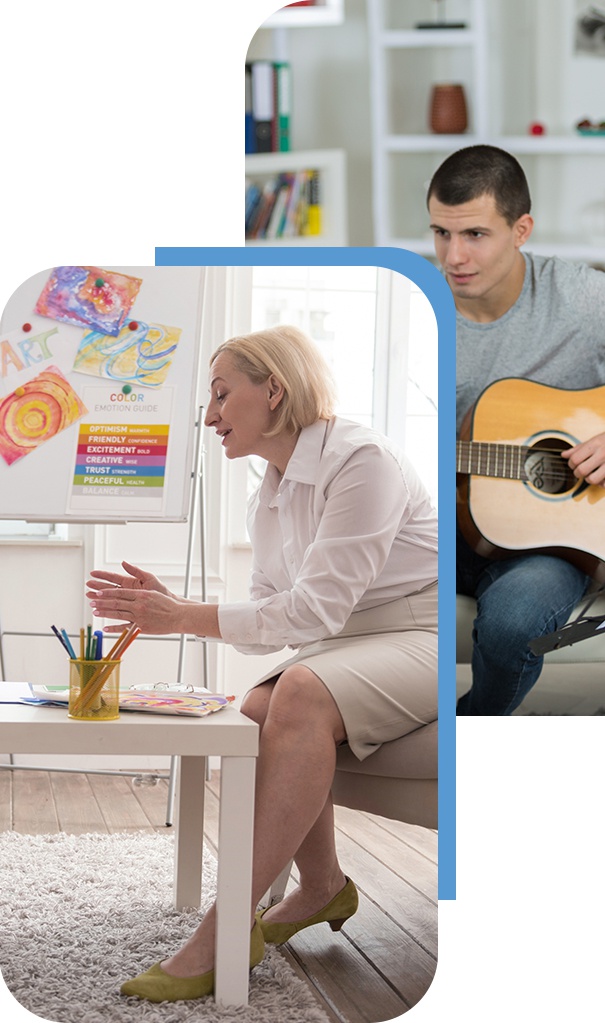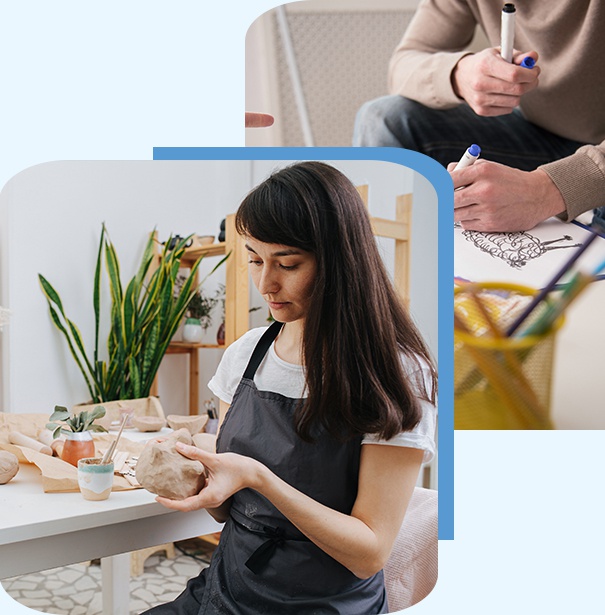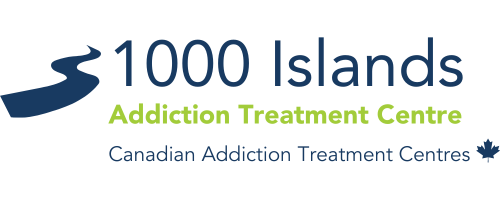Art & Music Activities
One of the cornerstones of addiction treatment is individual therapy, where the recovering person is guided by a counsellor in the exploration of difficult subjects and painful memories. This process can feel awkward and uncomfortable. It can take time for a relationship of trust to form between therapist and patient. Even when the trust is there, the individual may find themselves unable to articulate their life experiences and innermost thoughts.
We allow for this by offering art and music sessions, both of which allow for the expression of difficult emotions or thoughts without the individual actually having to talk about them.
While creative therapies are rarely used as standalone treatments for addiction, they are highly effective when used in conjunction with individual and group therapy.
CALL OUR TOLL-FREE HELPLINE NOW AT 1-855-929-4045 or SEND US A MESSAGE
How Does Creative Sessions Work?
Art and music therapy are exactly the way they sound: participants create a piece of art or engage in music. Their level of skill in those fields does not matter: the focus is not on the art or music itself, but on how the individual uses these things to express thoughts and emotions.
Art
Art sessions can include activities that include the following:
- Draw or paint a picture that is focused on your emotions
- Make puppets that can be used to tell a story
- Make a postcard that you will never send
- Draw or paint a landscape, where the mountains represent the good times in your life, the valleys represent the bad times, and landmarks and objects represent specific life events
- Make a collage that represents something significant in your life
- Create a self-portrait that reflects who you are today, and then create one that reflects who you want to be in the future
- Draw or paint a picture of yourself as a superhero with any superpower you want
- Draw or paint a picture of a place where you feel safe
- Create something that brings your hands in direct contact with the material, such as pottery or finger painting
Music
Many people think music involves singing or playing an instrument. Hence, they worry that lack of musical skill or talent will hold them back. But music sessions is a lot more varied than most people realize. Activities include the following:
- Listen to a piece of music and describe how it makes you feel and the images that it brings to mind
- Express your emotions through dance
- Turn your feelings into the a poem, or the lyrics of a song
- Participate in a guided drum circle that combines synchronized rhythm with freestyle drumming
- Explore ways to create sounds from everyday objects


Advantages Of Creative Activities
Here’s why we incorporate creative sessions in our services:
It Is A Language Everyone Understands
One of the beautiful things about art and music is that they are universal. These pursuits are the oldest known forms of non-verbal communication: long before humans learned how to write, they were telling stories through songs and pictures.
It doesn’t matter whether or not you can draw, sing, or play the piano. These creative activities are so broad that everyone can benefit from it in their own way.
It Gives You An Alternative Way To Express Your Feelings
Talking is difficult for some people, especially in the beginning, while you are building a relationship of trust with your therapist. Art and music can give you a way to express things that you find difficult to talk about.
Instead of telling a counsellor about a traumatic childhood memory, you can draw a picture about it. Instead of trying to verbally explain the anger and desperation you feel, you can release that emotion in a drum circle class.
It Can Be A Launchpad For Discussion
Both art and music can be intense experiences that allow you to release a lot of emotion. This can be used to generate valuable discussion with your therapist or counsellor, whether you describe how you felt during a dance exercise or bring one of your pictures to your session.

It Gives You Something Tangible
Many people who participate in art sessions during their addiction treatment and rehab programs choose to take home some of their artistic creations.
They keep them as reminders of what they have accomplished and the journey they took to get there. Some people enrol in art or music classes after they leave our facility, so they can continue the work they started while they were with us.
There Are Links Between Creativity And Mental Health
Engaging the creative parts of the brain can lead to improved cognitive function and a better sense of mental health and wellbeing. Participants gain a sense of confidence as they overcome challenges.
It Is A Great Stress Reliever
Music and art are both known to relieve stress. They are tangible activities that can lead to improvements in teamwork and collaboration (when done in a group format), an improved ability to set goals and work toward them, and a greater sense of self-esteem when you have completed a project or mastered a skill.
In addition, the techniques you learn can be carried forward into your post-rehab phase. They are great distractions, that can be used to get you through cravings and temptations to revert back to using the substance you used to rely on.
Call Us Today
To find out more about our music and art sessions, and how they fit into an overall addiction rehab and recovery treatment program, give us a call. Your journey to a better life can start right now.


